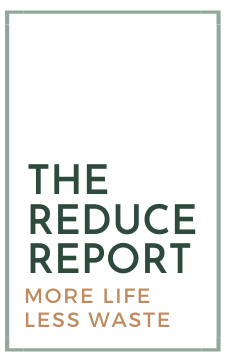Toothpaste Ingredients: NHAP versus Fluoride - Which one is better? Our Review.
What Are the Ingredients and What Do They Do?
NHAP (or nHap or nano-hydroxyapatite) - excluding the ‘nano,’ a naturally occuring mineral of calcium apatite. Hydroxyapatite is the main component of enamel and is a primary part of both bones and teeth. According to a study done by dentists and doctors, the nano part in nano-hydroxyapatite (when part of a toothpaste) has the ability to bind to teeth, filling in holes and effectively remineralizing teeth.
Sodium Fluoride - inorganic compound. Scientists are not completely sure how fluoride works in protecting teeth. It may bind to plaque and prohibiting bacteria to grow, thereby not allowing it to settle on teeth or it may bind with the hydroxyapatite in teeeth and effectively replace it with fluorapatite, which has been shown to be more decay resistant.
How Did They Get Discovered?
NHAP (or nHap or nano-hydroxyapatite) - NASA discovered nHap because astronauts were losing bone and tooth density due to their exercises and missions in zero-gravity. In 1970, a Japanese company called Sangi bought the rights to use the technology and produce toothpaste using the compound nHap.
Sodium Fluoride - Fluoride in water was accidentally discovered in the 1900s in Colorado. A dentist noticed that local residents whose teeth were exposed to fluoride had extremely brown teeth, however, despite the coloring, their teeth tended to be resistent to decay. By the 1940s, municipalities began purposefully fluoridating water with an amount that wouldn’t cause much brown staining but should prevent decay.
What Are the Drawbacks?
NHAP (or nHap or nano-hydroxyapatite) - Nano-hydroxyapatite has other applications beyond strengthening teeth to make sure they don’t decay. For those uses, current structures may not work as well in a pH neutral environment. In the mouth, the pH is not typically neutral, which means nHAP works fine in those conditions.
A dental drawback is that high enough concentrations are prohibited at this point and the cost of this element is much higher than fluoride. The cost of this compound is significantly more than fluoride which is why solid toothpaste, which tends to use nHap, is way more expensive. (Around $5 per year per period versus $100 per year per person.)
Sodium Fluoride - In some regions of the world, there is access to too much fluoride, both through water and dental products, which can cause fluorosis, a browning of teeth. Fluoride is access via salt, milk, some drinking water (naturally or added) as well as dental products. Not knowing the content of each can lead to ingesting or receiving too much fluoride.
By the way, excess fluoride that is associated with negative effects is recieved by ingesting water and other fluoridating substances — not by the topical toothpaste since that is spit out.
What Do We Think?
Based on our reading, we believe that nHAP might be a smidge superior to fluoride when it comes to tooth protection from decay. Given its effectiveness and compatibility with the human body, hydroxyapatite is used in maxiofacial and periodontal surgery to recompose larger parts of bone. Nano-hydroxyapatite looks to work similarly for daily use in teeth. A secondary feature is that nHap helps with tooth sensitivity than does fluoride.
We think fluoride has proven to be a beneficial element in dental health over the decades and our beef would not be in topical applications such as toothpaste. With toothpaste, the product is generally rinsed off well enough to not cause other long term issues. We think fluoridated toothpaste is a good addition to a healthy dental regimine.
If we had our choice, however, even with the added cost, it seems like nHap may be a better option.
We're on a mission to reduce our personal carbon footprint with small, hopefully easy, changes in our home to fight against climate change. This means we're looking for products that may be all natural, ideally zero waste, reusable or compostable -- while still being affordable!







